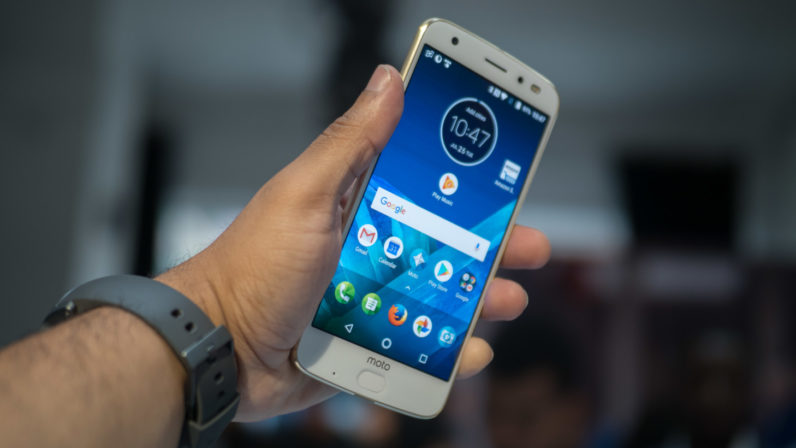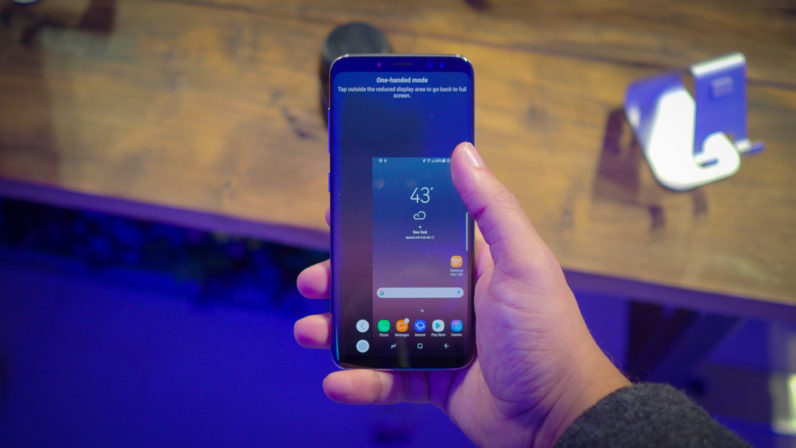The best version of the interface is … Guess wrong.

Fans Android stick to two self-evident commandments: Android is better iOS and the closer it is to the 'stock' or AOSP, the better. For the tech-savvy user, a visual add-on on Android is optional at best and is perceived as an inconvenience. In most cases, it is like a mischievous miscalculation by manufacturers who do not understand the needs of their users. I have been sharing this thought with friends, family and the web since the first example of an add-on on top of Android – HTC Sense appeared in 2009. However, after 8 years I am not so sure about it anymore.
Faster hardware and disappointing results
In disputes about manufacturer's add-ons, including visual ones, a number of traditional arguments 'against' arise. Here is some of them:
- Add-ins look worse than 'drain'
- Redundant or duplicated applications
- Slows down the operation of the device
- Visually inconsistent with Material Design in apps
- Slower to update
- Complicate Android
- Drain the battery faster
Until last year or the year before last, I fully agreed with these points. But as the power of devices grows, and manufacturers become more successful in optimizing them, I begin to realize that my thoughts have become more like technical prejudice than a balanced opinion. Devices with a 'clean' version Android will initially guarantee faster performance, but more powerful hardware means the difference will diminish with each generation.

Three or four years ago, it was nearly impossible to find a device that worked as perfectly as a Nexus smartphone. But in the process of reviewing Huawei Mate 9, which is as far as possible from the 'stock' version Android, I was surprised by the speed and smoothness of the device, which, by the way, did not decrease and lasted for many months . Samsung, whose TouchWiz has been consistently criticized, has made significant improvements to its Samsung Experience interface in the S8. After three months of use, I have not experienced the long delays already known to me from other devices of the company, which they experienced after downloading applications. The Nexus or Pixel may not work perfectly after extended use, but any slowdown is so slight that we will not attach any importance to it.
The 'stock' version Android cannot even guarantee timely updates. The correlation between add-ons and update frequency is not massive, at least in the US Motorola, which has been virtually a copy since time immemorial Android, has been dragging out security policy updates. Again, in the US this is a more drawn-out and time-consuming process because all such devices are continually promoted by operators and device manufacturers. And to send operators only for bread. OnePlus, whose interface can be described as close to 'clean' Android, used to be more leisurely. Samsung, despite its love for the actual version of the interface, pretty quickly releases security updates, firmware patches and beta versions of major updates.
Most manufacturers should provide their devices with new functionalities in order to increase brand awareness and popularity. I was able to find some patterns. Let Android 'show off' its flexibility in comparison iOS, but many things are impossible to get without root access.
Here is a list of functions that I couldn't get by with stock Android:
- Reduced display mode
- Moving, changing, hiding navigation keys.
- Assignment of new functional 'chips' and gestures by means of the navigation button.
- Change theme color, night mode
- Icons
- Font selection
- Always-On display
- Resolution change, game mode
- Reading mode
- Popup windows
In other cases, I've used apps to access some functionality, but they either didn't work seamlessly, or I felt I had to resort to pre-installed options. Video recording in devices Huawei and extra-long screenshots in Samsung come to mind, but there are plenty of similar examples.

All cards in this case are confused by the fact that Android no longer exists in the 'stock' form. An example of seeing the 'cleanest' version Android was the Nexus series. They were a framework, a kind of prototype, on the basis of which manufacturers could create something of their own or add the necessary functions. Nexus has never really been seen as a way to make money.
Pixel is different. Smartphones are sold at premium prices and in order to spur the sale of a device, Google had to look for and give us a reason to choose their device, sweeping aside all competitors. Therefore, Google included exclusive functionalities in the Pixel, distancing the line from the Nexus. Bonuses such as 24/7 support, Pixel camera software, new color options and the Pixel launcher will not appear on other Android devices, even for the relatively old Nexus devices. The company will never repeat Samsung's experience of including extra bonuses, but it's not hard to imagine Google continuing to push exclusive updates across its devices.

What I mean is that what we call 'stock' Android is no longer Google's ideal for its own OS, it is the Pixel ROM. Its settings and additions by and large repeat the shell of any other Android – smartphone. Google has obvious advantages of a 'home field', but it should be equally applicable to other add-ons. Do not misunderstand me. I myself prefer the more 'stock' versions Android. The lightweight shell is good for long battery life, I love Material Design. Throughout my history of using and reviewing Android smartphones, I just decided that the user experience would be better depending on how close the device was to 'stock'. This state of affairs was relevant, but now it is not so obvious.
Don't count as a stamp, but the best version Android is the one you like the most. Add-ons should be treated like any other feature and the phone should be judged for individual 'merit'. This is what fans are doing now Android.
Original material by Napier Lopez
Over the past couple of years, I have managed to work with three or four Android smartphones. And on each of them, regardless of the version installed Android, I changed the launcher to the one I was used to. By and large, the version of the factory superstructure Android, especially its external aspect, has lost its significance for me. Again, the 'tweaks' have not gone anywhere, I actively use them. The author emphasizes that functional leadership is no longer on the side of the 'drain', the visual component is purely individual, I agree.
Does this mean that stock will soon become the lot of novice authors of custom firmwares and devices with simplified interfaces for children and the elderly? Or maybe over time all these superstructures will merge into one whole? I would really not like this, for me Android is attractive precisely because of its diversity, both in hardware and software.
